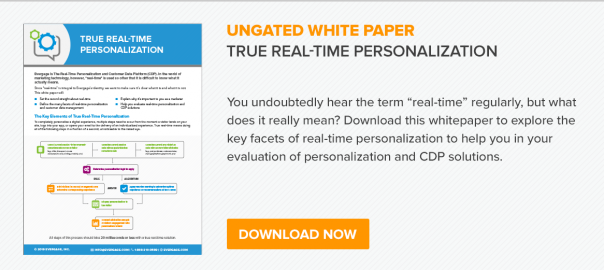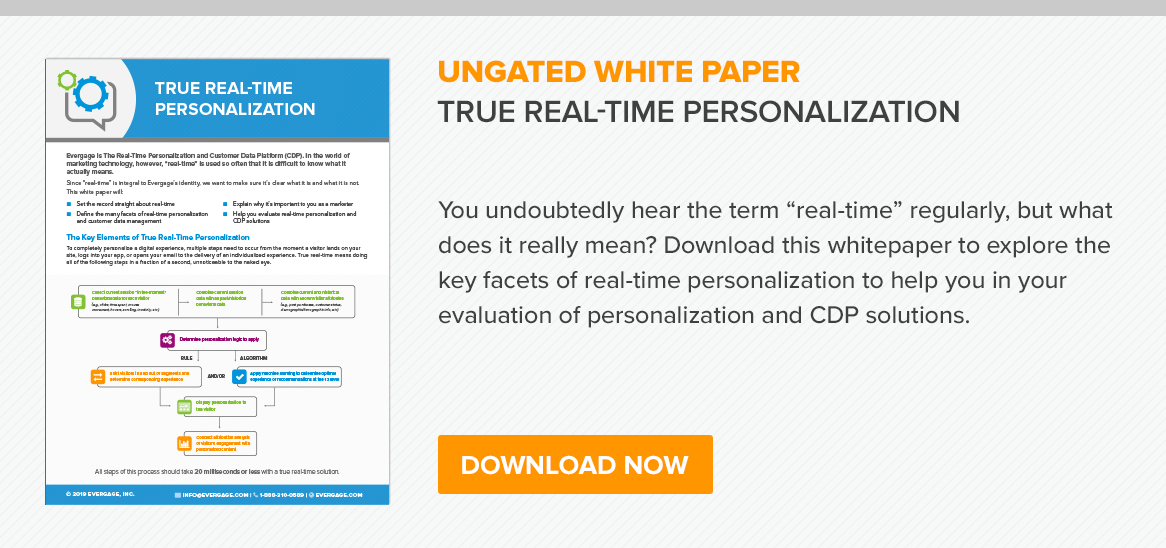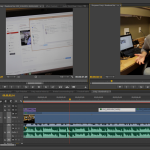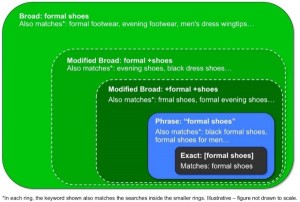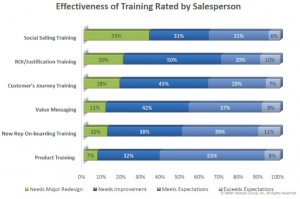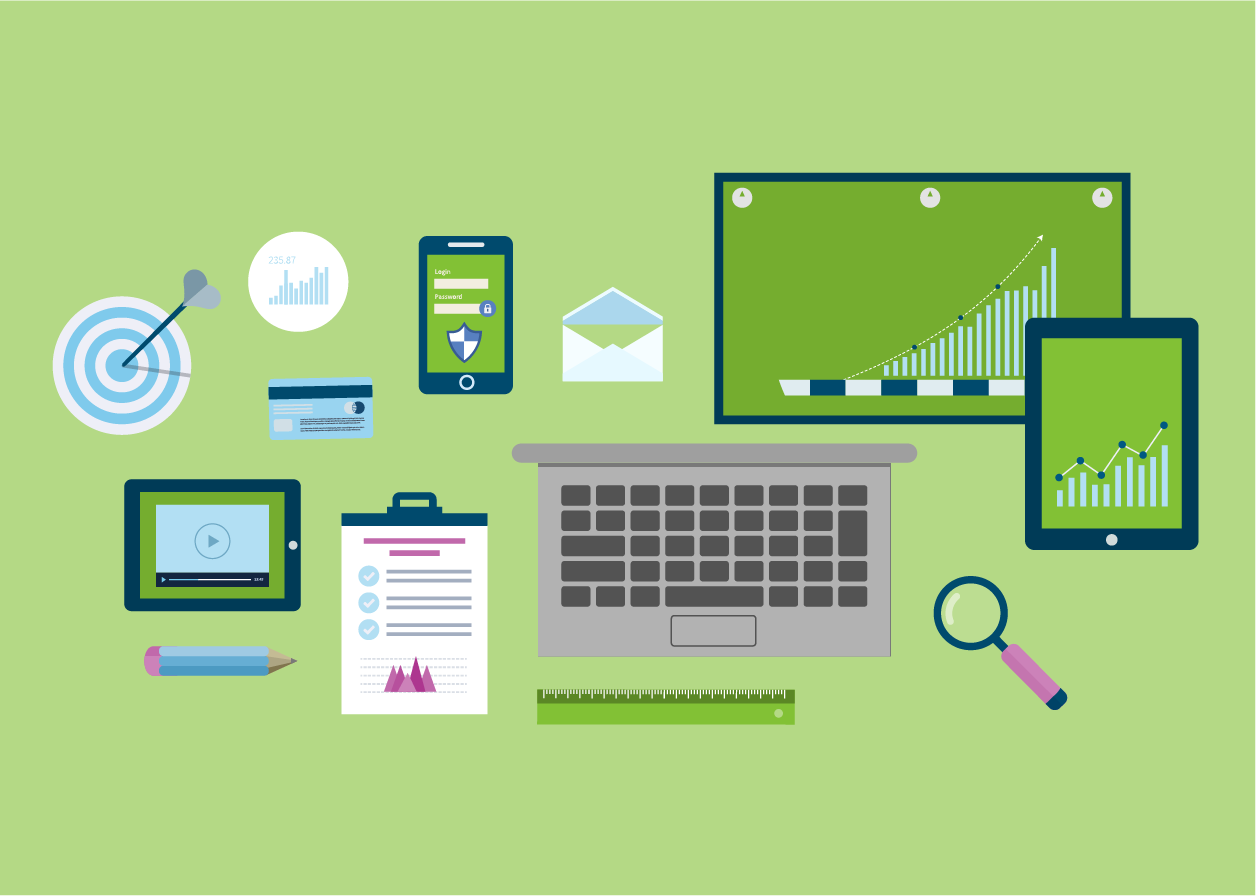
Good personalization is based on good data. The more you know about a person – and his or her interests, intent, prior history and behavior across your channels, and other attributes – the more you can deliver a relevant, engaging experience that drives conversion.
What about personalization for first-time visitors, though? Is the concept itself an oxymoron? When it comes to personalization for first-time visitors, marketers may be tempted to throw up their hands. After all, when someone lands on your website for the first time, there’s no data to drive a personalized experience, right?
Wrong. B2C and B2B companies can access and tap into various data points to deliver relevant experiences to first-time visitors, and make them feel welcomed and confident they’ve landed in the right place.
Personalization-Worthy Data Points
When visitors come to your website for the first time, your personalization platform should detect and factor in data including:
- The fact that they’re a first-time visitor
- Where they’re coming from (e.g., a referring source, paid media, email, etc.)
- The page they’re landing on
- Their geolocation
- Their device (for optimizing how content is presented)
- Firmographic data (for B2B – such as company name, employee count, revenue range, industry, etc.)
- Initial intent data, once they’re on your site (e.g., What kinds of messaging, campaigns and categories are they engaging with?)
Examples & Tips
Here are five strategies – many mapped to the areas above – for deploying personalization to first-time visitors.
1. Personalization Based on First-Time Visitor Status
When you detect that individuals are first-time visitors, there’s an opportunity to present content and campaigns that give them more information about your company – and that help you get more information about them (to feed into further personalization efforts and analyses). Here are some ideas:
- Educate First-Time Visitors – If someone lands on your homepage for the first time, your personalization engine can prioritize displaying introductory and how-to content and videos, to better familiarize the individual with your company and offerings.
- Highlight Trending Products and Content – In the absence of detailed information about the visitor’s interests, you can showcase recommendations of popular products and content in your banners, inline content, etc. (Then, once the visitor starts clicking and engaging, you’ll have more intent data to drive better-targeted, real-time recs.)
- Present Email Capture Opportunities – If someone is on your website for the first time, you probably don’t have their email address yet (unless, of course, it’s an email clickthrough!). If that’s the case, use the opportunity to strategically display a message inviting them to opt in to receive email – ideally waiting until the person has shown additional indicators of interest (scrolled down, clicked to visit a second page, spent at least two minutes on the site, etc.).
- Show a (Brief!) Survey – If there’s not much data to go on, and you have questions about a visitor’s interests and intent, sometimes the best action is to ask! When you deploy brief, strategic surveys – and then immediately use the person’s response to trigger a relevant, in-the-moment experience – visitors are much more likely to share their information with you. The below B2B and B2C examples highlight how to use surveys effectively to deliver in-the-moment personalization to first-time visitors:
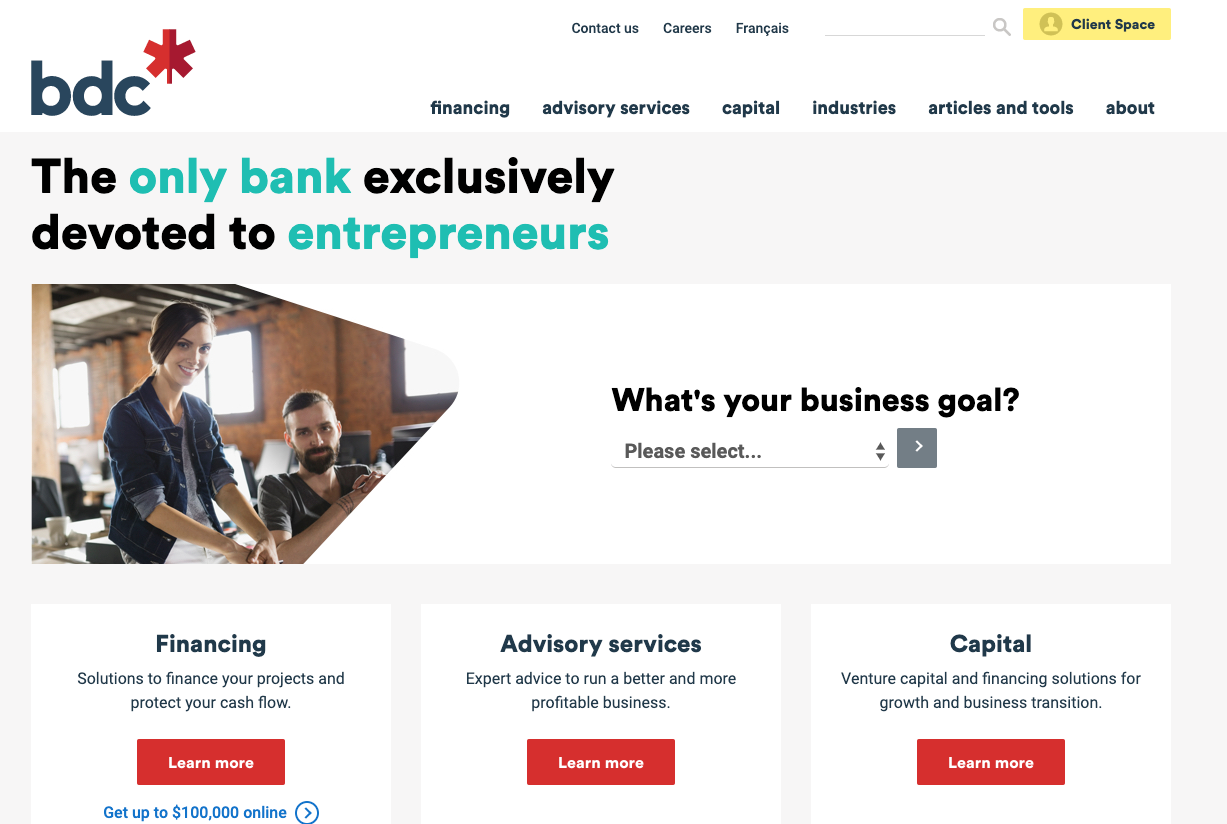
New visitors on the Business Development Bank of Canada (BDC) homepage see, incorporated into the hero area near the top, a survey that directly relates to their experience – asking what their business goals are (with options such as “managing my cash flow,” “finding the right loan” and “getting new customers”). Respondents’ answers dictate the information they see next – helping connect visitors to the information they need.
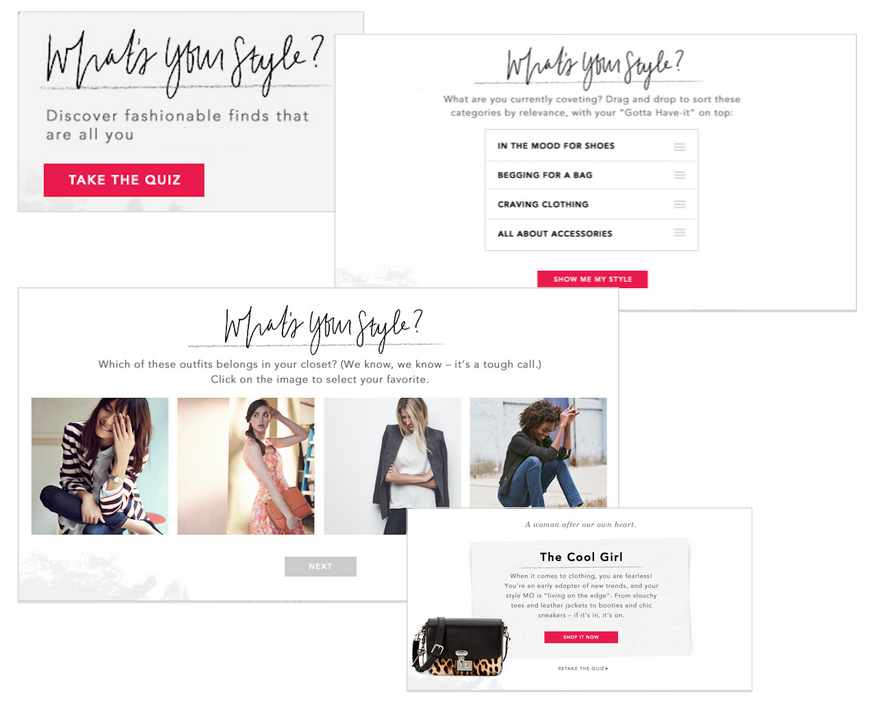
A clothing retailer, for example, could present surveys like this one above to engage first-time visitors – using their responses and applying algorithms such as collaborative filtering to immediately start deploying experiences likely to engage them.
2. Personalization Based on How a Visitor Arrived
The source that brought a first-time visitor to your site can play a driving role in the experience you then display. For example, if you’re a security solutions provider, did a new visitor click on an ad related to threat management to get to your site? Use that indicator of interest when personalizing the visitor’s experience.
Or if someone searching for dresses arrived at your clothing site, it makes sense to highlight recommendations related to dresses as well.
For e-commerce companies, in particular: When running multiple promotions, it’s important to keep track of which promotion brought a new (or repeat) visitor to your site. By keeping that promotion visible to the visitor as he or she engages across your channels – as clothing and swimsuit retailer Venus does in the example below – you can drive a streamlined, cohesive and personalized experience that eliminates confusion and increases conversions.
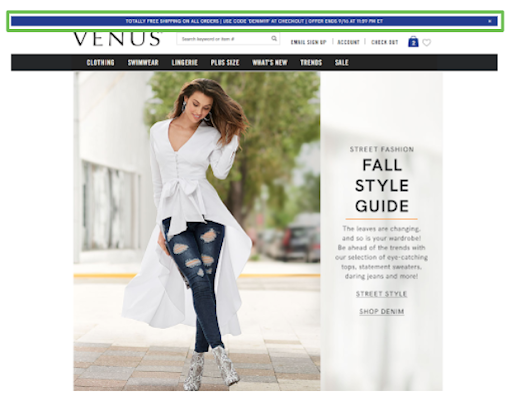
The infobar highlighted above, targeting promotional traffic from email and mobile (and displaying the same offer across all channels), increased average order value (AOV) for Venus by 19.6% and conversion rates by 14.1%.
3. Personalization Based on Where a Visitor Landed
Let’s say the first time someone visits your site, they land on a blog page (B2B) or product detail page (e-commerce). You can capitalize on their interest by prominently showcasing (“above-the-fold”) recommendations for related content and items. In essence, you’re telling your visitors, “If the item you clicked on doesn’t strike your fancy, check out the other, similar options we have available.”
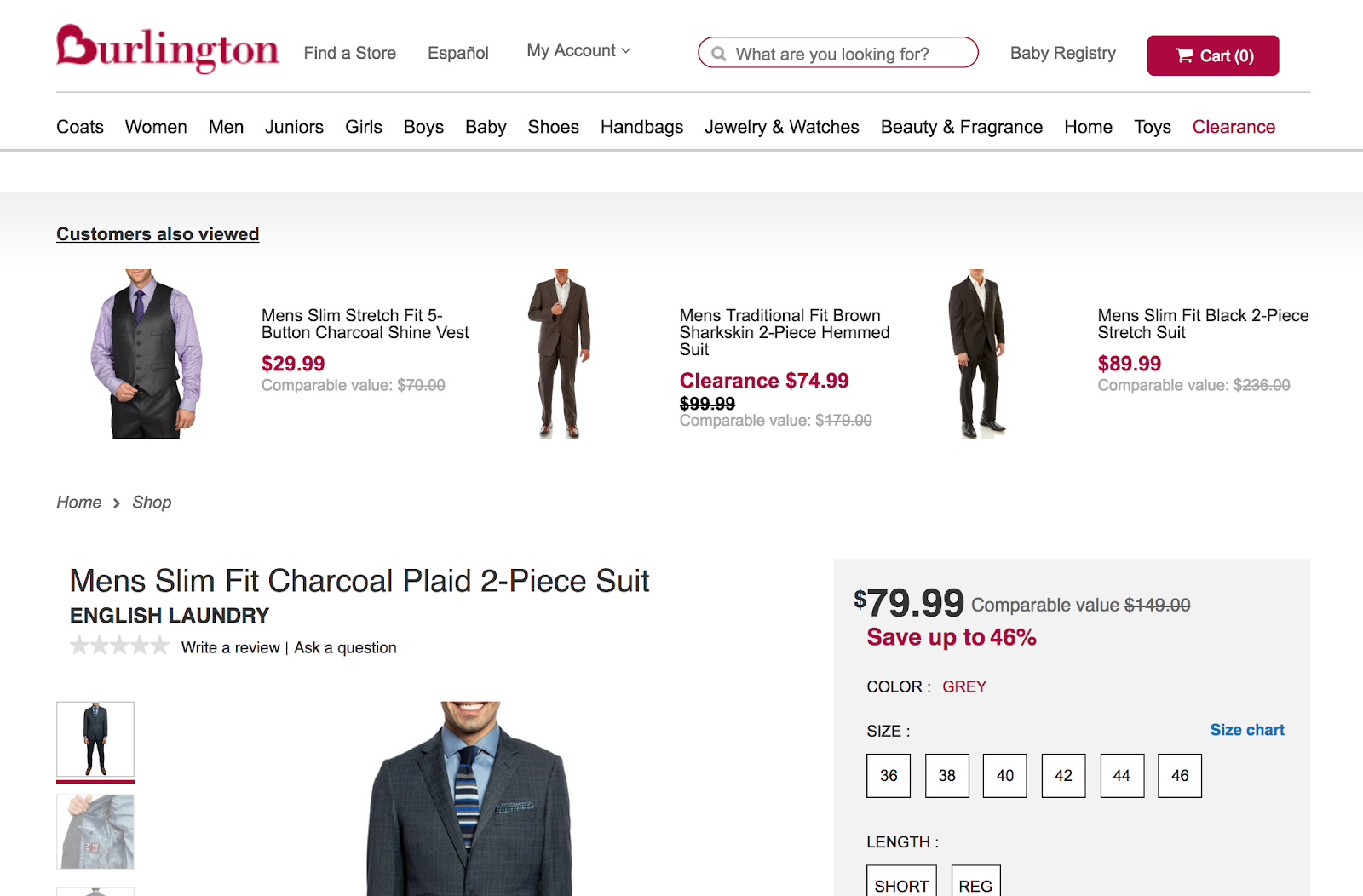
This clothing retailer highlights suits that other customers also viewed – so shoppers can find just what they want.
4. Personalization Based on Geolocation (e-commerce)
For e-commerce companies, in particular, a first-time (and even repeat) shopper’s geolocation can provide great data for personalization. Carhartt, a durable workwear retailer, has tapped into its customers’ propensity to buy items for using right away – personalizing its homepage to reflect weather conditions for individual visitors (e.g., If it’s raining, the site will recommend a raincoat – and not the same raincoat in Maine as what’s recommended for Florida). This utility-based approach drove a 24% lift in conversion rates and a 15.5% lift in average order value.
Carhartt uses geolocation data in other ways too. At Evergage’s Personalization Summit a couple years ago, Carhartt told CMSWire about a campaign that matched each online shopper’s zip code data with a map of where NFL team fanbases are located – so that Detroit shoppers, for instance, were recommended Lions items, and Boston shoppers saw prominent recommendations for Patriots gear, etc. See more detail in the brief interview below:
Aaron Nilsson, manager of digital experience at @Carhartt, talks with @DomNicastro at #EVGSummit18 about a personalization success story pic.twitter.com/wsmEnoFYF0
— CMSWire.com (@cmswire) September 13, 2018
5. Industry- and Firmographic-Based Personalization (B2B)
B2B organizations can use their personalization platform to detect a first-time (and repeat) visitor’s industry, additional firmographic data and other attributes, and then immediately deliver a relevant experience – with related case studies, recommendations and other content that help visitors feel “at home.” For example, as part of its account-based marketing (ABM) strategy, human capital management (HCM) platform provider Paycor dynamically adjusts its homepage to present industry-specific content to prospects (e.g., a prospect in the healthcare industry sees a healthcare-specific version of the homepage, a small business owner sees a small-business version, and someone in a finance role sees finance-specific messaging.)
This strategy has proven very effective. By showing the healthcare-oriented homepage (rather than its standard, generic one) to healthcare prospects, Paycor increased clickthrough rates (CTRs) by 72% and conversion rates by 47%. Displaying the small business-oriented page to relevant prospects increased conversions by a remarkable 164%. And the finance persona homepage – shown to finance prospects – increased their conversion rate by 121%.

By presenting personalized versions of its homepage in real time to visitors detected as healthcare, small business and finance prospects (among other groups), Paycor was able to increase CTRs and conversions.
Final Thoughts
Once a first-time visitor starts engaging on your site/channels – interacting with the experiences and providing behavioral indicators of interest (clicking, hovering, scrolling, active time spent on page, etc.) – you can then deploy better-targeted recommendations, build and enhance that person’s profile, and apply more advanced algorithms to refine your personalization. Don’t forget to continually test and optimize your campaigns, too, so you know what’s most effective for building interest and loyalty. After all, making first-time visitors feel welcomed and engaged is an important step to turning them into repeat visitors and customers!
To learn more and discover if Evergage could be the right personalization platform for your company, request a demo today.
Digital & Social Articles on Business 2 Community
(71)
Report Post